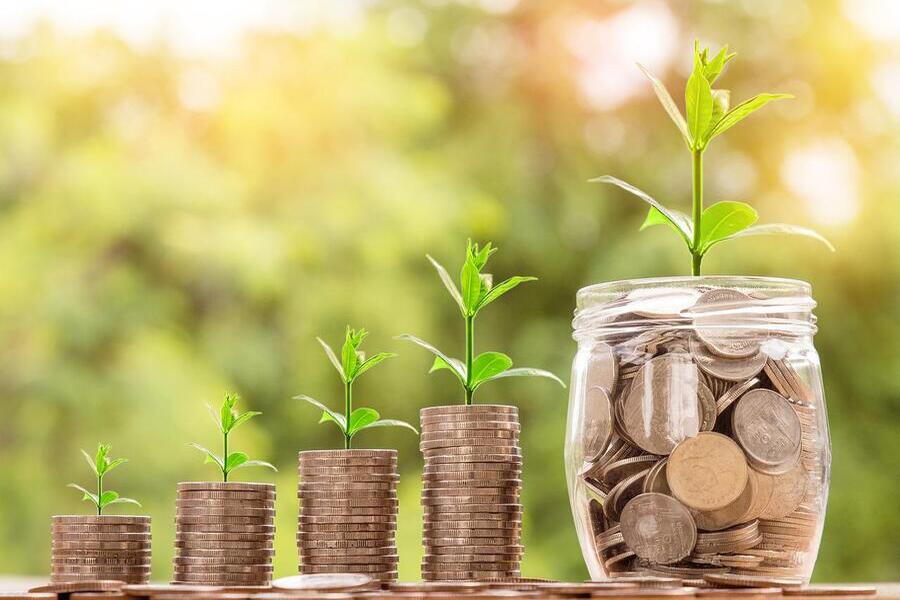The UK is a world leader in green finance. At COP26, the UK made green finance one of the central themes. The UK also became the first G20 country to require the biggest companies and financial firms to provide public information about how they respond to the financial risks associated with climate change.
In 2021, the UK Infrastructure Bank was set up with £22billion of capital to decarbonize the economy and the UK Government has raised £26billion trading green gilts. These statistics are essential to meet the UK 2050 net-zero goal, with lenders being encouraged to make green and sustainable finance available to existing and potential borrowers.
What is a green loan?
Green loans are a form of lending which requires a borrower to use the borrowed funds to finance projects that contribute to a substantial environmental objective for their business. Their purpose is to help companies prepare for reduced-carbon goals being set by governments, including by reducing energy consumption and costs, and the creation of greener technologies.
The Loan Market Association (LMA) defines them as “any type of loan instrument made available exclusively to finance or refinance, in whole or in part, new and/or existing eligible ‘green projects’”.
Green projects include renewable energy, energy efficiency, climate change adaptation, and green buildings that meet regional, national, or internationally recognised standards or certifications. The LMA launched its Green Loan Principles in 2018, which provide a framework to articulate the important characteristics of a green loan.
What is a sustainability-linked loan (SLL)?
A sustainability-linked loan (SLL) is defined as a loan or a contingent facility that encourages the borrower to achieve a set of predetermined goals linked to sustainability performance. Their purpose is to support and sustain economic growth and activity in a sustainable way.
The lender will measure this performance by way of sustainability performance targets (SPTs) which will include a set of key performance indicators (KPIs) and improvement metrics. These may often be linked to the LMA Sustainability Linked Loan Principles (SLLPs).
Sustainability Linked Loan Principles
These are made up of the following core components:
- Relationship to Borrower’s Overall Corporate Social Responsibility (CSR) Strategy
The borrower of a SLL must clearly communicate to its lenders its sustainability objectives and how these align with the proposed SPTs. - Target Setting – Measuring the Sustainability of the Borrower
The lender and borrower should come to an agreement as to what the SPTs are going to be. These SPTs will be linked to an improvement in relation to a performance target benchmark which will be decided at the outset of the transaction. The intention of linking these is to incentivise borrowers to continue throughout the term of the loan to make improvements to their sustainability objectives. For example, the margin under a facility agreement could be reduced when the borrower satisfies an SPT. - Reporting
Borrowers are required to provide detailed up to date information to their lenders in relation to the SPTs. These updates should be regular and no less frequently than one update per year. Typically, a borrower may make this information available via their annual reports, but this is not a requirement. - Review
The method of external review will be decided by the lender and borrower at the start of the transaction. Where the reported information is not made publicly available, the borrower should obtain an external review of its performance against its SPTs.
Drafting a sustainable facility
The LMA had not previously provided any draft clauses surrounding SLLs for insertion into loan facilities. However, the LMA recently released their model clauses for borrowing and lending in relation to SLLs to include in loan facility documents.
The drafting notes and model provisions notes reflect the SLLPs and have developed from market practice. Notably, the LMA’s model clauses in relation to SLLs:
- place emphasis on the benchmarking of KPIs against market standards and include methods of calculation
- require external performance reviews against SPTs set in respect of the KPIs
- provide for a margin ratchet based on SPTs being met
- introduce a ‘rendez-vous clause’ which provides a tool to make updates to the KPIs or SPTs to enable the company to ensure the SPTs remain aligned with the borrower’s business and its commitment to sustainability
- specify events that which would declassify the facilities as sustainability-linked. This is an anti-greenwashing feature which may generate negotiation in its triggers and consequences
- do not consider a failure to comply with the SLL conditions as an event of default but such a failure to comply would trigger other mechanisms in the facility, such as the margin rachet (which may cause an increase in interest). It may also result in a declassification of the loan as being sustainability-linked, which could have further repercussions for the borrower’s business.
So what’s the difference between a green loan and an SLL?
The key difference really comes down to the use of proceeds. SLLs can be used for general corporate purposes, whilst the proceeds of a green loan must be used for a specific “green project”.
To discuss the issues raised in this article in more detail or if you need advice in relation to green loans or sustainability linked loans, please get in touch with our Banking & Finance experts .




